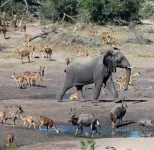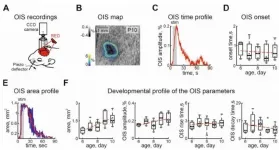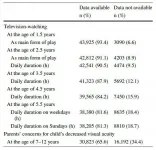Experimental drug makes radiation therapy more effective, less damaging
2021-05-20
(Press-News.org) DALLAS - May 20, 2021 - An experimental drug that has shown promise in protecting healthy tissue from collateral damage caused by radiation therapy for cancer also appears to enhance radiation's capacity to kill tumors, a new study led by UT Southwestern scientists shows. The findings, published online in Science Translational Medicine, could provide a much-needed boost to the radiation treatments used against a variety of tumor types.
The drug, avasopasem manganese (AVA), has already shown promise in clinical trials to prevent a side effect known as acute mucositis. This condition commonly occurs in head and neck cancer patients when radiation therapy damages mucous membranes. However, for this drug to become part of clinical care, it should protect healthy cells from radiation but not cancer cells, explains study leader Michael Story, Ph.D., professor of radiation oncology at UTSW and a member of the Harold C. Simmons Comprehensive Cancer Center.
To determine whether AVA was accomplishing this goal, Story and colleagues at UTSW and the University of Iowa treated cancerous cell lines with this compound before exposing them to radiation. The cancerous cells that received the drug were not protected from radiation and, surprisingly, appeared in some cases to respond more to radiation compared with those that did not receive AVA, particularly at high radiation doses.
This phenomenon also occurred in cancerous cell lines that had been implanted in mice and allowed to grow into tumors. The tumors shrank significantly more when animals were treated with AVA just before receiving a single high dose of radiation, similar to a technique referred to as stereotactic ablative radiotherapy (SAbR), which is used for cancer therapy, compared with those that did not receive the drug. When the treated mice received the drug both before radiation and in the days after, in some cases their tumors disappeared completely.
These positive results in animals were found in several different tumor types, including lung, pancreatic, and head and neck. Further experiments showed that AVA appears to exert its enhanced tumor-killing effects by converting superoxide, which are damaging oxygen ions generated by high doses of radiation, to hydrogen peroxide at levels that overwhelm a tumor's ability to tolerate hydrogen peroxide. Furthermore, using an engineered cell line that overexpressed an enzyme that rids tumors of excess hydrogen peroxide, the anti-tumor effect was nearly eliminated.
Story, a member of the Simmons Cancer Center's Experimental Therapeutics Research Program, notes that AVA is currently being tested in phase 1 and phase 2 clinical trials to enhance therapy, including one clinical trial that combined SAbR with AVA that nearly doubled overall survival in pancreatic cancer patients. "With this drug," he says, "the radiation doses we deliver could be profoundly more effective, while at the same time contribute to protecting adjacent normal tissues."
INFORMATION:
Other UTSW researchers who contributed to this study include Brock J. Sishc, Lianghao Ding, Taek-Keun Nam, Debabrata Saha, and Britta Langen. Douglas Spitz at the University of Iowa co-led the study, and scientists at Galera Therapeutics Inc. also contributed.
This work was supported by Galera Therapeutics and National Institutes of Health grants T32 CA078586, P30CA086862, P01CA217797, R44CA206795, and the David A. Pistenmaa M.D., Ph.D. Distinguished Chair.
Story holds the David A. Pistenmaa, M.D., Ph.D. Distinguished Chair in Radiation Oncology,
About UT Southwestern Medical Center
UT Southwestern, one of the premier academic medical centers in the nation, integrates pioneering biomedical research with exceptional clinical care and education. The institution's faculty has received six Nobel Prizes, and includes 25 members of the National Academy of Sciences, 17 members of the National Academy of Medicine, and 13 Howard Hughes Medical Institute Investigators. The full-time faculty of more than 2,800 is responsible for groundbreaking medical advances and is committed to translating science-driven research quickly to new clinical treatments. UT Southwestern physicians provide care in about 80 specialties to more than 117,000 hospitalized patients, more than 360,000 emergency room cases, and oversee nearly 3 million outpatient visits a year.
[Attachments] See images for this press release:

ELSE PRESS RELEASES FROM THIS DATE:
2021-05-20
Elephants and lions are iconic species that help raise substantial funds for conservation. However, they also pose significant threats to people, crops, and livestock, and are themselves threatened with extinction.
Areas at severe risk are identified
In a new article published in the journal Nature Communications, scientists have identified the areas that are most at risk for conflicts between humans and elephants and lions in Africa. They also estimated the associated return on investment of building and maintaining high-quality fences, which are used to reduce conflict between humans and wildlife.
Associate Professor Enrico Di Minin, who is the lead author of this article and leads the Helsinki Lab of Interdisciplinary Conservation Science ...
2021-05-20
Great tits living in cities are genetically different from great tits in the countryside. This is what researchers have found in a unique study, where they examined populations of great tits in nine large European cities.
The researchers compared the city bird genes with the genes of their relatives in the countryside. It did not matter if the great tits lived in Milan, Malmö or Madrid: in order to handle an environment created by humans, the birds evolved in a similar way.
Different gene types linked to important biological functions such as cognition and various behaviours regulated by serotonin, including aggression and circadian rhythms, were found to have been selected and passed on from generation to generation. In rural populations, these behaviours are also ...
2021-05-20
When the United States issued national stay-at-home guidelines in March 2020 in response to the COVID-19 pandemic, mobility across the country dropped significantly. New research from the Harvard John A. Paulson School of Engineering and Applied Sciences (SEAS) demonstrates that people may be inclined to change their behavior in response to national guidelines, more than state and local policies.
"When the next pandemic hits, we need to know what kind of policies are going to have the biggest impact on human behavior and health," said Marianna Linz, Assistant Professor of Environmental Science and Engineering and of Earth and Planetary Sciences at SEAS and senior author of the paper. "While specific, local ...
2021-05-20
Two experimental drug approaches that target vulnerabilities in cancer cell metabolism may extend survival and enhance the effectiveness of standard chemotherapies for a highly aggressive type of pediatric brain cancer.
The findings were reported by Johns Hopkins Kimmel Cancer Center researchers in two published studies.
Medulloblastoma is the most common malignant pediatric brain tumor. A subset of patients with tumors known as Group 3 MYC-amplified medulloblastoma have an overall survival rate of less than 25%. In these patients, the cancer-promoting MYC oncogene drives cancer cell growth by altering cancer cell metabolism. Cancer cells use energy in ways that are different from normal cells, ...
2021-05-20
Researchers in China, Japan, and Singapore were able to resume research much quicker than their counterparts in the US and Europe after the first covid lockdowns, results of a new international survey suggest.
Published 'Open Access' in the peer-reviewed journal Science and Technology of Advanced Materials, the findings of the 'Survey on the effects of the COVID-19 pandemic on research activities of materials scientists', which also included a series of podcasts with eminent experts, highlight how severe the impact of lockdowns affected researchers internationally.
33% of respondents had to shut down all equipment.
The outcomes were not uniform internationally however, as whilst labs in the UK and parts of the USA, Spain, and India were not accessible ...
2021-05-20
DURHAM, N.C. -- Researchers have discovered a new coronavirus, found in a child with pneumonia in Malaysia in 2018, that appears to have jumped from dog to human.
If confirmed as a pathogen, the novel canine-like coronavirus could represent the eighth unique coronavirus known to cause disease in humans. The discovery also suggests coronaviruses are being transmitted from animals to humans more commonly than was previously thought.
"How common this virus is, and whether it can be transmitted efficiently from dogs to humans or between humans, nobody knows," said Gregory Gray, M.D., a professor of medicine, ...
2021-05-20
Study lead, Research Associate of the Neurobiology Lab Marat Minlebaev explains, "Our brain is a complex mechanism, and it's important to understand how it works. If we understand how our brain functions, we can put forth new treatment methodologies or prevent pathologies, both congenital and acquired."
A number of techniques were used to undertake the research, so, apart from biologists, other scientists were also invited to partake.
"Fourth year students Viktoria Shumkova and Violetta Sitdikova conducted experiments and analyzed their results," says Minlebaev. "To implement the idea, new software was ...
2021-05-20
Researchers from Russia and Germany have created a genome-wide atlas of developmental alternative splicing changes of seven organs in six mammal species and chicken.
The research was published in the journal Nature Genetics.
As the protein encoding RNA matures in eukaryotes, it gets spliced, with some parts cut out and the remaining fragments stitched together. Alternative splicing means that the same RNA fragment can either be cut out from or kept within the mature RNA. In this case, one gene can encode several RNAs and, therefore, several proteins. Although alternative splicing is known to be essential for many tissues to develop and function properly and its various disorders may cause health problems, ...
2021-05-20
It is ingrained in parents to curtail the hours their children spend in front of the television. Anecdotal evidence suggests that prolonged viewing of television and use of smart gadgets during early years can adversely affect a child's eyesight and behavioral development. However, there is little scientific evidence to support such observations on the effects of excessive television exposure on children's visual acuity. Now, Professor MATSUO Toshihiko (M.D., Ph.D.) and Professor YORIFUJI Takashi (M.D., Ph.D.) from Okayama University describe how such exposure can indeed have detrimental effects on children's eyesight during later years.
The researchers used a national database of the Japan Government, based on the annual survey of all children born in the certain period of the ...
2021-05-20
Nerves release a protein at the injury site that attracts growing nerve fibers and thus keeps them entrapped there. This prevents them from growing in the right direction to bridge the injury. The research team headed by Professor Dietmar Fischer reports in the journal Proceedings of the National Academy of Sciences (PNAS) from 25. May 2021.
There must be another cause
Three main causes for the inability of injured nerves of the central nervous system, or CNS, to regenerate have been known to date: the insufficient activation of a regeneration program in injured nerve cells that stimulates the growth of fibers, so-called axons; the formation of a scar at the site ...
LAST 30 PRESS RELEASES:
[Press-News.org] Experimental drug makes radiation therapy more effective, less damaging




